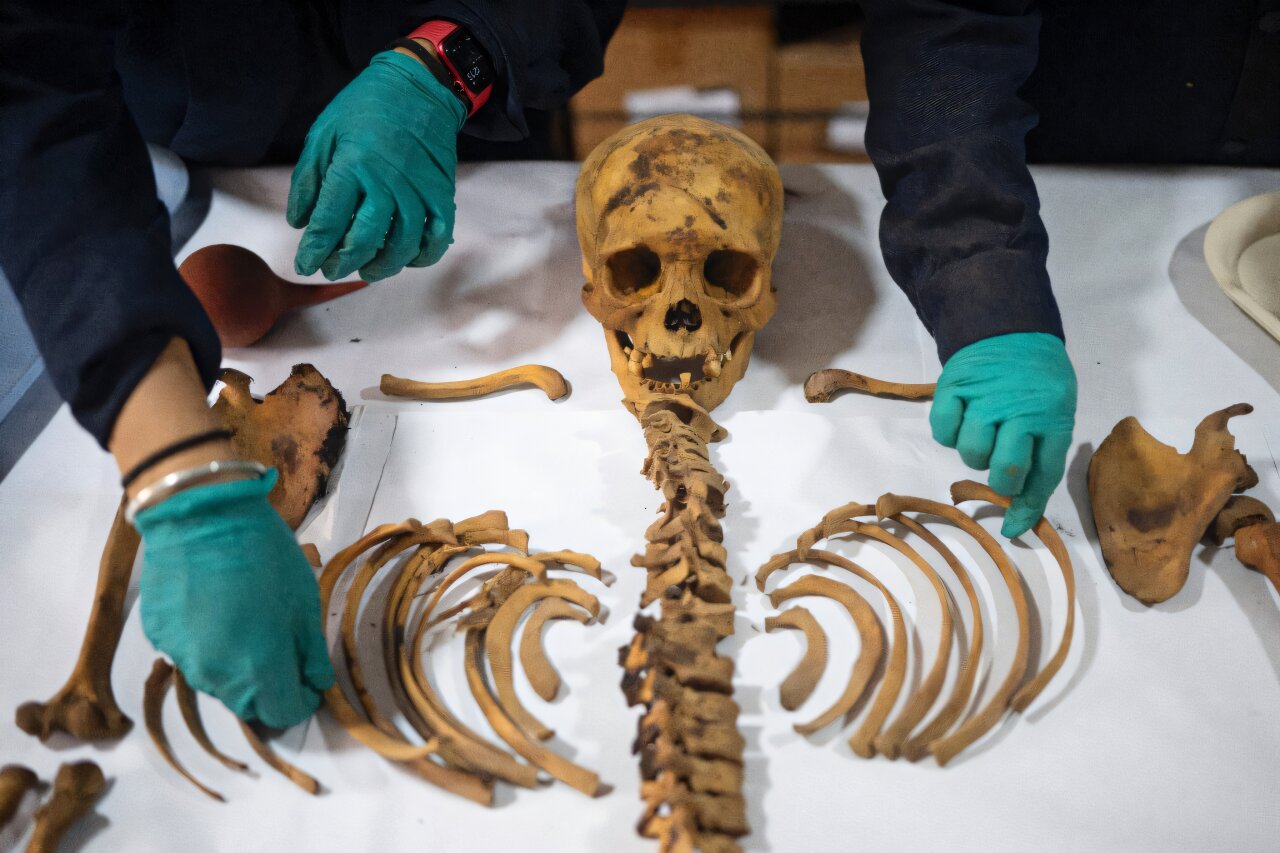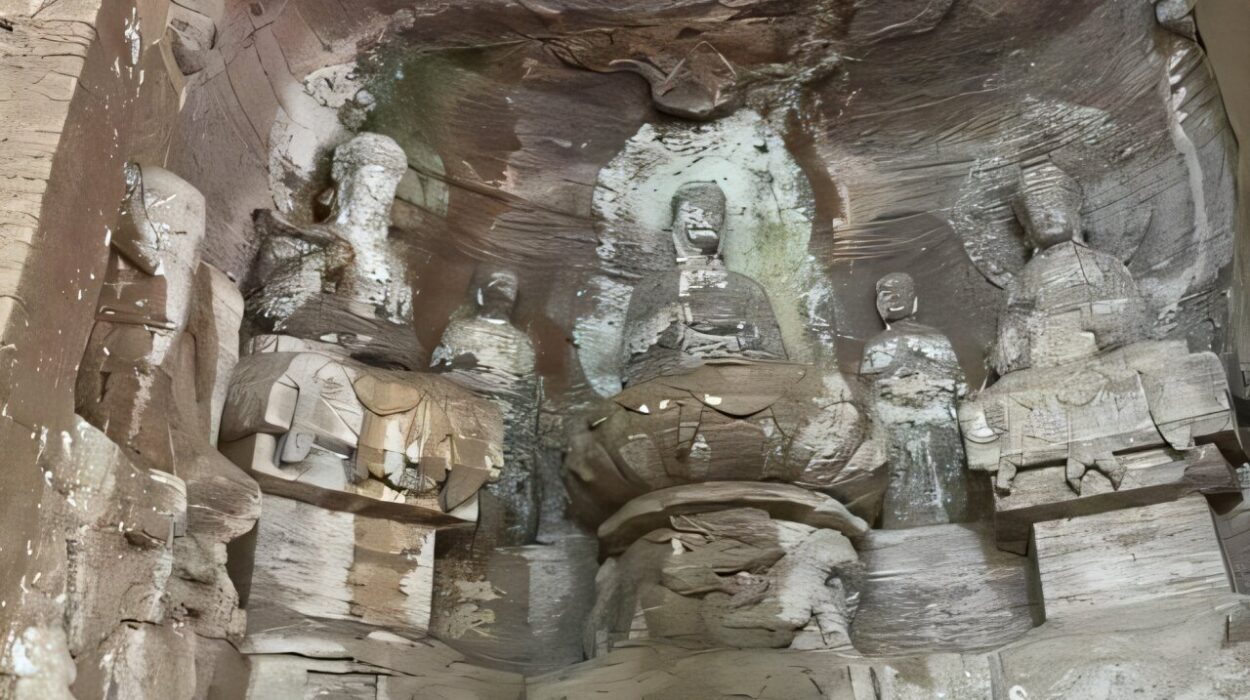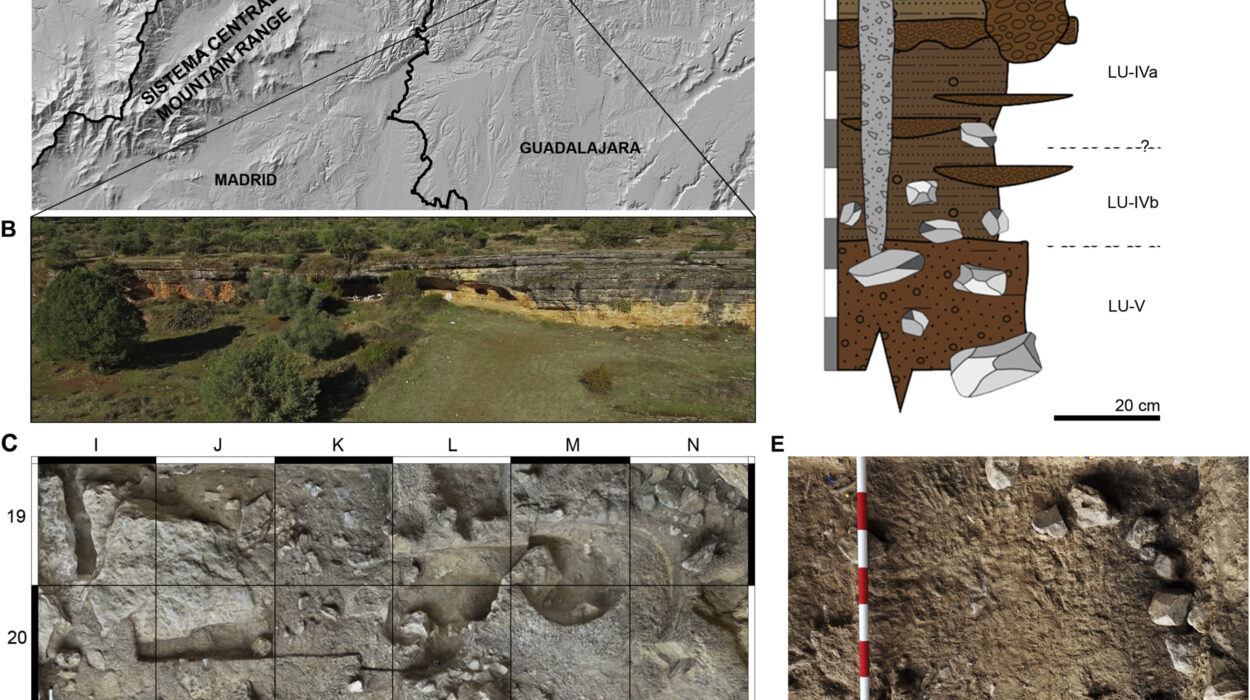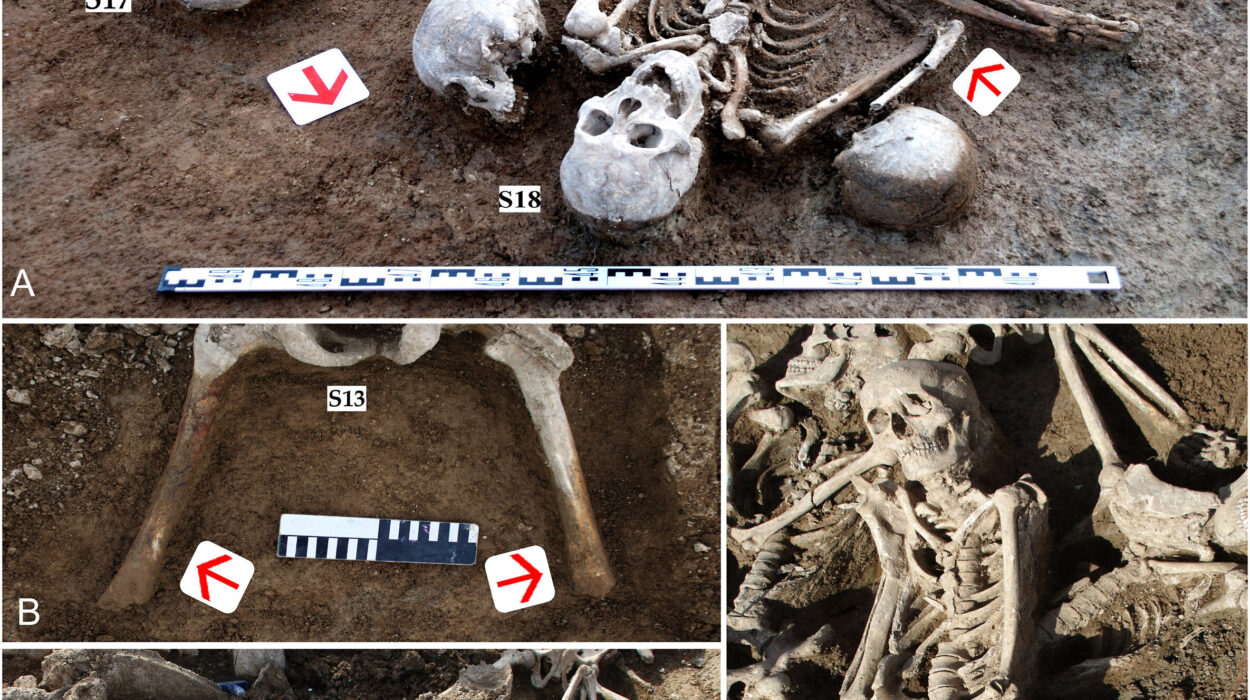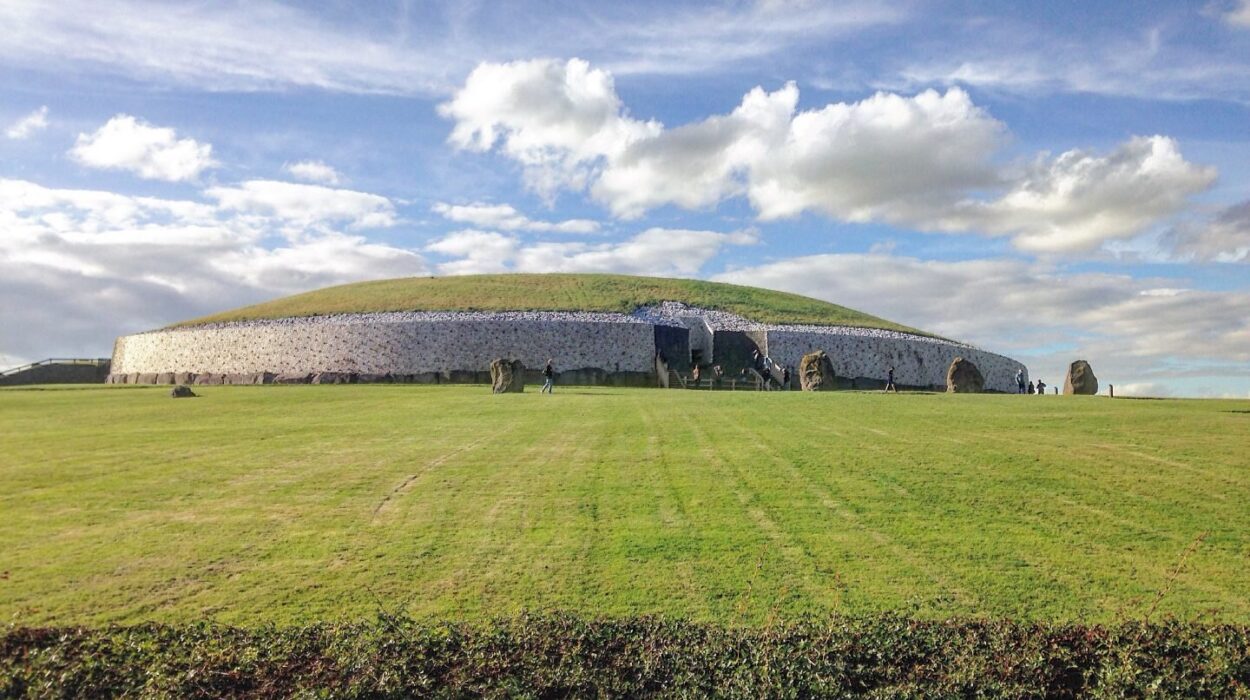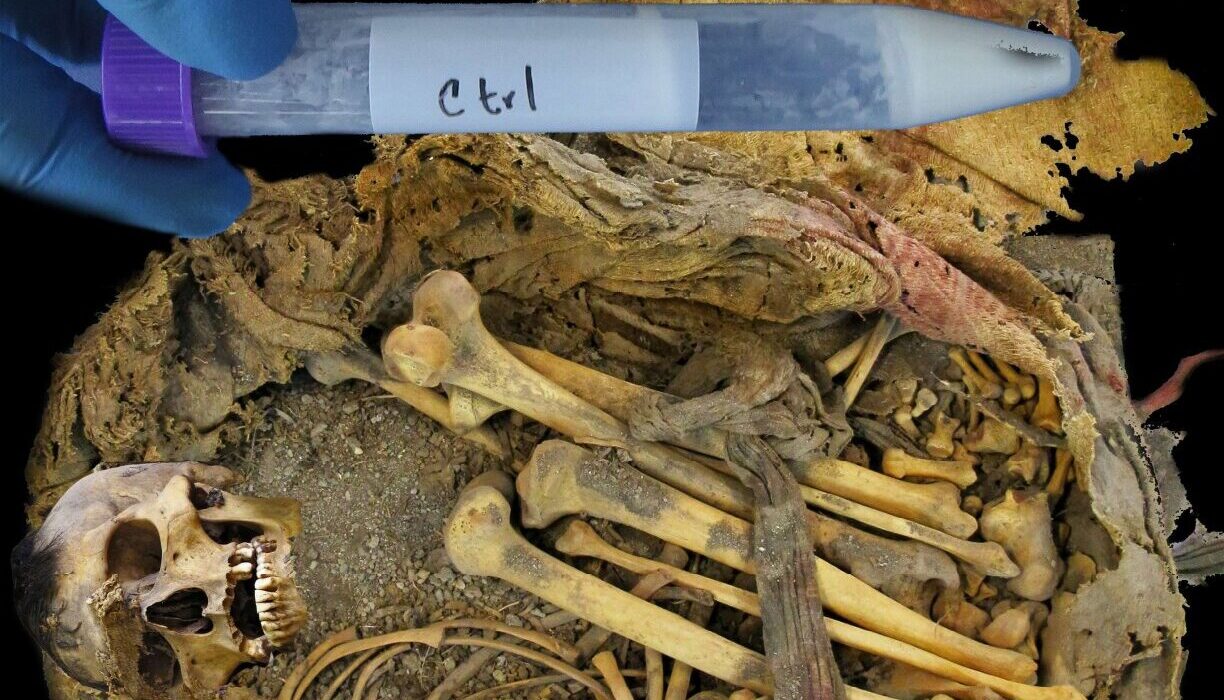As the morning sun broke over Lima’s northern district of Puente Piedra, the air was thick with dust and the mechanical hum of gas line construction. But beneath the buzz of modern infrastructure, history stirred—silently waiting, wrapped in earth and memory.
What began as a routine excavation by gas workers turned into a breathtaking rediscovery of Peru’s ancestral past: the remarkably preserved mummy of a young boy, hidden for over a thousand years just beneath the asphalt.
At a depth of only 1.2 meters, the mummy was curled in a fetal-like position, knees bent against his chest, shrouded in ancient cloth and encircled by ceremonial items. The child—believed to be between 10 and 15 years old—had lain undisturbed in his tomb for centuries, a quiet emissary from the time of the Chancay civilization.
A Tree That Pointed to the Past
The first clue came in the form of roots—roots not of modern weeds or sidewalk cracks, but of a huarango tree, a native species revered in Peru’s coastal cultures. The workers, hired by Calidda—the private company responsible for Lima’s gas lines—were trained to pause and report any signs of archaeological material. And so, when the roots appeared with strange regularity, they stopped digging and called in the experts.
“This kind of tree was often used as a tomb marker in pre-Hispanic times,” explained Jesús Bahamonde, archaeologist and scientific coordinator for Calidda. “It was a sign that the land beneath held sacred ground.”
The site quickly shifted from a construction zone to an open-air archaeological dig. What they uncovered beneath the tree’s gnarled trunk was a story written in soil and shadow.
The Boy Beneath the City
Unearthed from the reddish earth was a burial that dated between 1000 and 1200 CE, a period associated with the Chancay culture, an advanced coastal society that predated the Inca Empire by several centuries.
The boy had been buried with care and ceremony. His skeletal form was positioned upright, arms and legs drawn in, as was common in Andean funerary practices. A woven burial shroud, now frayed with age, wrapped around him. Beside him were objects that whispered of daily life and belief: calabash gourds, traditionally used to hold water or offerings; ceramic vessels decorated with geometric patterns; plates and jugs etched with the images of fishermen.
“It’s not just a body,” said Bahamonde. “It’s a story. A snapshot of a civilization that lived, worked, believed, and died on this very land long before the city we know was built.”
A City Built on Ancient Footprints
Lima is a modern metropolis home to nearly 11 million people, a city of highways, high-rises, and honking traffic. But beneath its bustling surface lies an extraordinary truth: the capital of Peru is built on a graveyard of civilizations.
With more than 500 archaeological sites scattered across its sprawling neighborhoods, Lima is a silent archive of the past. These sites, known as “huacas” in the Quechua language, serve as ancient markers of burial grounds, temples, and communal spaces that once thrived in the pre-Columbian world.
Unlike many major cities, Lima lives atop its own museum, a layer cake of history dating back thousands of years. That is why, by Peruvian law, every construction project involving ground disturbance must include archaeological oversight. And for good reason.
Since 2004, Calidda alone has been responsible for over 2,200 archaeological discoveries—each one a puzzle piece in the grand tapestry of Peru’s pre-Hispanic civilizations.
The Chancay: A Civilization Lost in Time
The Chancay culture, to which this mummy and burial site belong, flourished between the 11th and 15th centuries along Peru’s central coast. They were known for their unique textile art, black-on-white pottery, and sophisticated irrigation systems. Unlike the militaristic Incas who followed them, the Chancay were relatively peaceful and focused on agriculture, trade, and craftsmanship.
Their society left behind more questions than answers. While their art and funerary practices survive in fragments, their language and many details of daily life remain elusive. Discoveries like this one offer vital windows into their world.
“This mummy helps us understand how they treated children in death,” said Bahamonde. “The offerings show the boy was valued—perhaps part of a community ritual or family lineage. Every artifact adds dimension to our understanding.”
A Moment of Stillness in a Racing World
There’s something profoundly humbling about finding a child, carefully buried, beneath the feet of an unsuspecting city. It makes the people of Lima pause. It reminds them that their streets, sidewalks, and skyscrapers rise upon the memories of others.
In a time when progress is measured in concrete and connectivity, discoveries like this pull us back to an earthier truth: we are not the first to walk these streets, and we will not be the last.
“It’s an emotional moment,” said one of the workers at the site. “You dig expecting cables and rocks—and instead you find a person. Someone who lived here before any of us.”
The Responsibility of Discovery
While the find is thrilling, it also carries weight. Peru’s heritage laws now take center stage. The mummy and artifacts have been carefully removed and transferred to the Ministry of Culture for preservation and further study. Each object will be catalogued, analyzed, and protected—not just as museum pieces, but as sacred remains of a once-living people.
Peru has long struggled with looting, black market antiquities, and the challenge of preserving its vast archaeological wealth. But moments like this, Bahamonde said, are hopeful.
“It shows the law working. It shows respect. And most of all, it shows that our ancestors are still speaking to us—if we’re willing to listen.”
From Construction Site to Cultural Site
Plans for the gas installation will resume, but now the site will also be remembered as more than just a pit in the pavement. For the residents of Puente Piedra, it is a moment of wonder—proof that beneath their feet lies a forgotten city, still yielding secrets, still refusing to be buried by time.
Schoolchildren have already visited the area with their teachers, pointing to where the mummy was found. Some leave flowers. Others ask questions. And all of them leave a little more aware that history isn’t locked in books—it’s alive, right here, right now, under the soles of our shoes.
A Child’s Silence, a Nation’s Voice
In the quiet, sunlit street where machines once roared and earth was moved by steel, the echoes of the past have once again broken through. A boy, long gone, is telling his story. His voice, though wordless, is vivid with the breath of a thousand years.
And we, the curious, the modern, the living, are left with the gift of knowing he was here.
